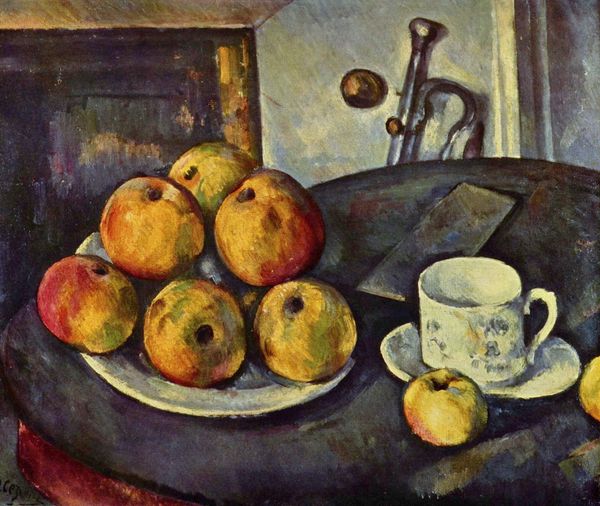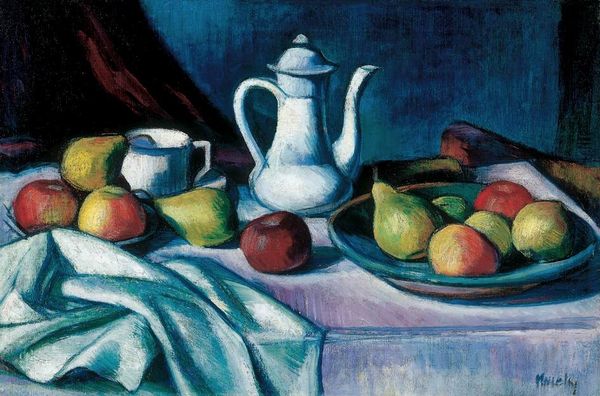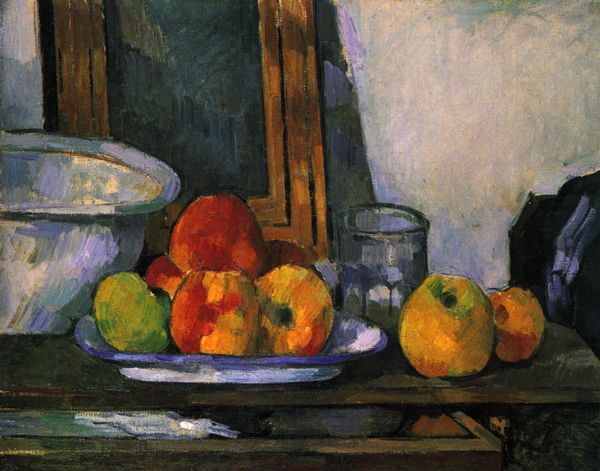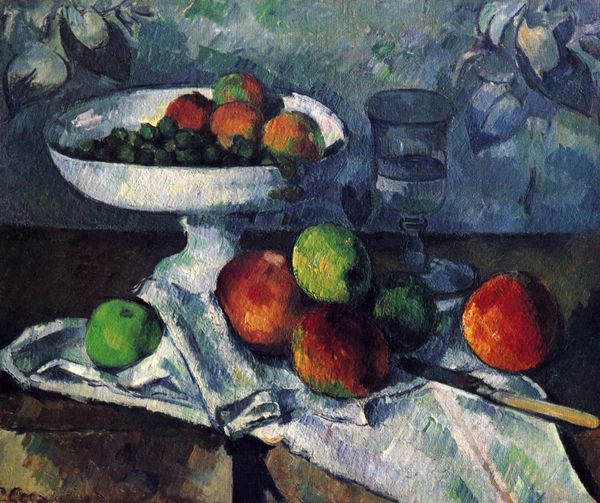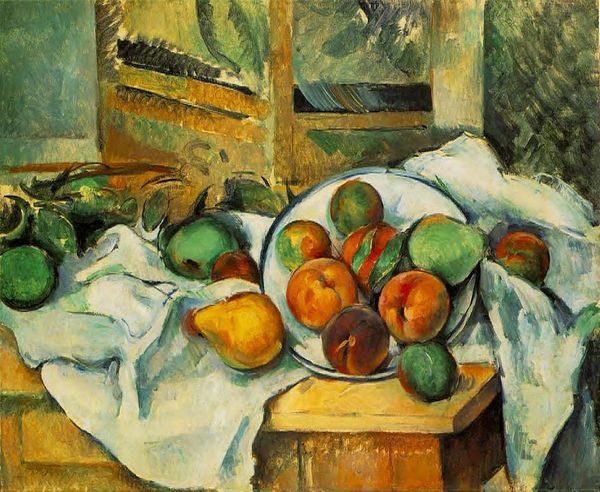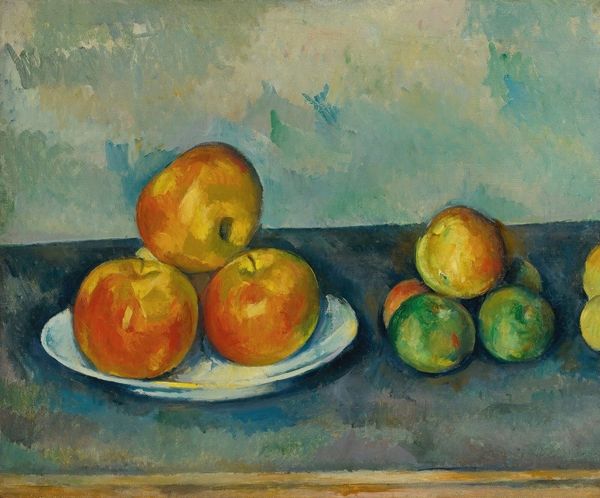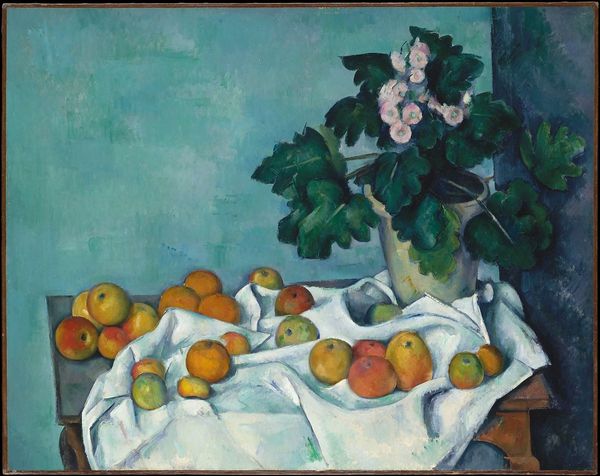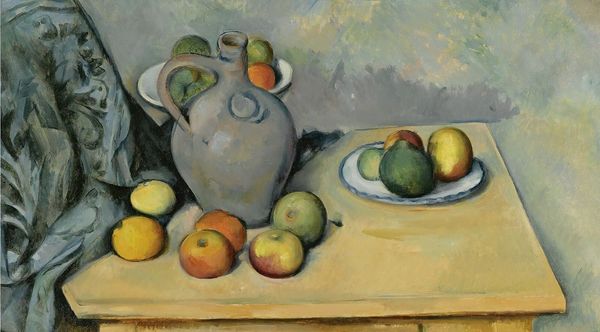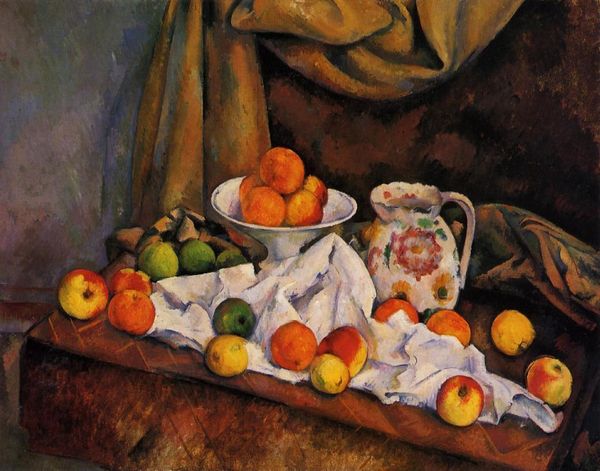
painting, oil-paint, impasto
#
painting
#
oil-paint
#
landscape
#
oil painting
#
impasto
#
geometric
#
post-impressionism
#
modernism
Copyright: Public domain
Paul Cézanne, working in late 19th-century France, painted "Sugarbowl, Pears and Tablecloth" as an arrangement of domestic objects. Cézanne, often working outside the fashionable art circles of Paris, cultivated a deep connection to his native Provence, a place deeply rooted in agricultural traditions. This still life can be seen as a reflection of the social landscape of his time. The tablecloth, sugar bowl, and carefully arranged fruit speak to the rituals of middle-class life, but Cézanne disrupts any conventional reading of domesticity. His arrangements reject traditional representation, challenging the viewer's perception of space and form. The tilted perspective and multiple viewpoints invite us to question the stability of the domestic sphere. In his own words, Cézanne aimed to "surprise" viewers, leading them to question their own perceptions. Cézanne's painting serves as a reminder of the power of art to reveal hidden aspects of society while also questioning the structures that shape our understanding of the world. This tension between representation and abstraction encapsulates Cézanne's contribution to modern art.
Comments
No comments
Be the first to comment and join the conversation on the ultimate creative platform.
